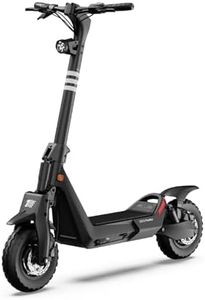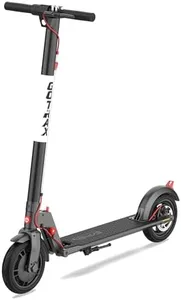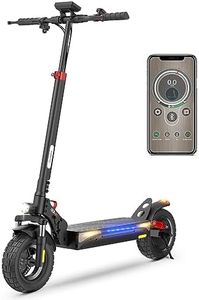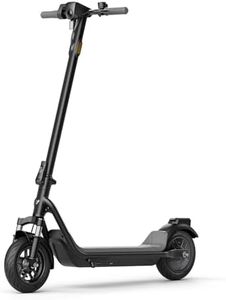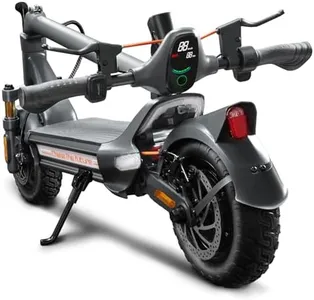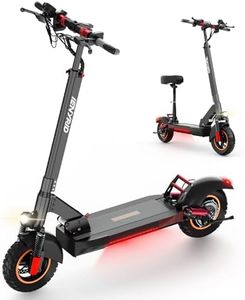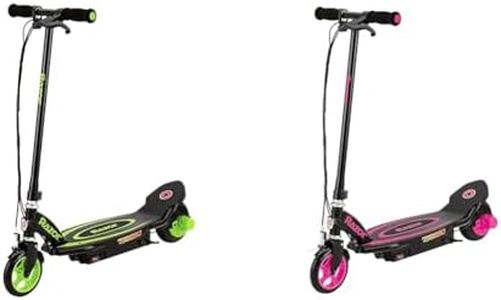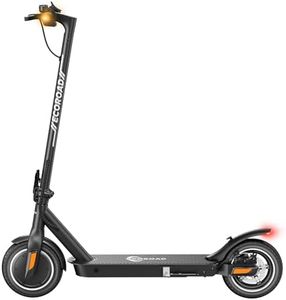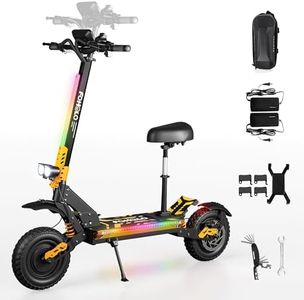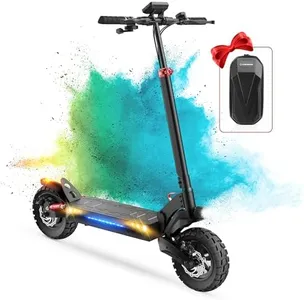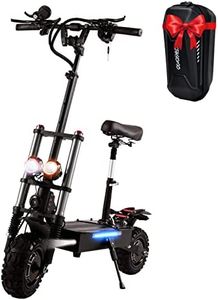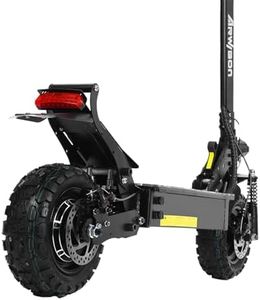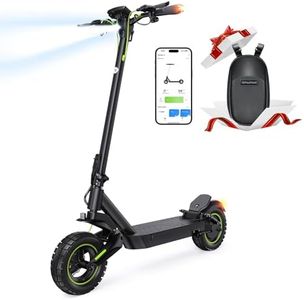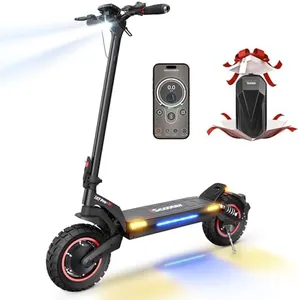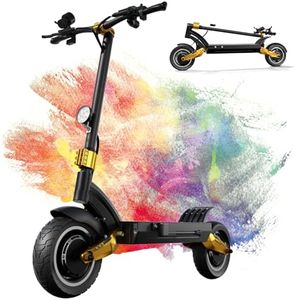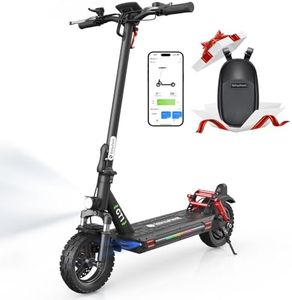We Use CookiesWe use cookies to enhance the security, performance,
functionality and for analytical and promotional activities. By continuing to browse this site you
are agreeing to our privacy policy
10 Best Off Road Scooters 2025 in the United States
How do we rank products for you?
Our technology thoroughly searches through the online shopping world, reviewing hundreds of sites. We then process and analyze this information, updating in real-time to bring you the latest top-rated products. This way, you always get the best and most current options available.

Buying Guide for the Best Off Road Scooters
Choosing the right off-road scooter can be a thrilling yet challenging task. Off-road scooters are designed to handle rough terrains, making them perfect for adventure enthusiasts. To ensure you pick the best fit for your needs, it's important to understand the key specifications that define their performance and suitability. Here’s a guide to help you navigate through the essential specs and make an informed decision.Motor PowerMotor power, measured in watts, determines the scooter's ability to handle tough terrains and steep inclines. Higher wattage means more power and better performance on rough surfaces. For light off-road use, a motor power of around 500-800 watts may suffice. For more demanding terrains, look for scooters with 1000 watts or more. Consider your typical riding conditions and choose a motor power that matches the level of difficulty you expect to encounter.
Battery LifeBattery life, often measured in ampere-hours (Ah) or miles per charge, indicates how long the scooter can run before needing a recharge. Longer battery life is crucial for extended off-road adventures. Scooters with a battery life of 10-15 Ah are suitable for shorter trips, while those with 20 Ah or more are better for longer journeys. Think about how far you plan to travel and select a battery capacity that ensures you won't run out of power mid-ride.
Tire Type and SizeTire type and size significantly impact the scooter's ability to handle different terrains. Off-road scooters typically feature larger, knobby tires that provide better grip and stability on uneven surfaces. Tires around 8-10 inches are good for moderate off-road use, while 11 inches or more are ideal for more challenging terrains. Consider the types of surfaces you'll be riding on and choose tires that offer the best traction and comfort for those conditions.
Suspension SystemA good suspension system absorbs shocks and provides a smoother ride on bumpy terrains. Off-road scooters usually come with front, rear, or dual suspension systems. Front suspension is adequate for light off-road use, while dual suspension offers the best comfort and control for rougher terrains. Assess the roughness of the terrains you plan to ride on and select a suspension system that will provide the necessary comfort and stability.
Weight CapacityWeight capacity refers to the maximum load the scooter can carry, including the rider and any additional gear. It's important to choose a scooter that can comfortably support your weight to ensure safety and optimal performance. Most off-road scooters have a weight capacity ranging from 220 to 330 pounds. Consider your weight and any extra equipment you might carry, and select a scooter that can handle the total load.
Build Quality and MaterialsThe build quality and materials used in the construction of the scooter affect its durability and ability to withstand rough use. Look for scooters made from high-quality materials like aluminum or steel, which offer strength without being too heavy. A well-built scooter will last longer and perform better under tough conditions. Evaluate the build quality by checking user reviews and manufacturer specifications to ensure you choose a durable and reliable scooter.
Braking SystemA reliable braking system is crucial for safety, especially on unpredictable off-road terrains. Off-road scooters typically feature disc brakes, drum brakes, or regenerative braking systems. Disc brakes offer the best performance and reliability, especially in wet or muddy conditions. Consider the types of terrains and conditions you'll be riding in and choose a braking system that provides the best stopping power and safety.
Most Popular Categories Right Now
